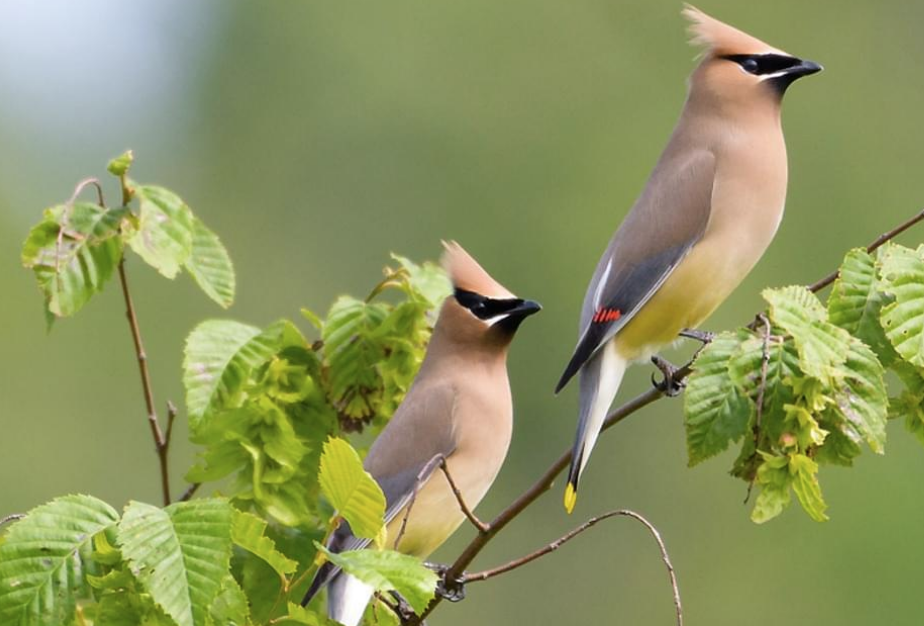Contributed by Bill Hamilton
I saw my first Cedar Waxwing many years ago at my Uncle Harold’s farm in northwestern Iowa. A small flock had flown in and landed on some spindly fruit (cherry?) trees and were gorging themselves on the still green fruit. At a distance I thought that they were female cardinals and thought it very odd that there were no males. My uncle loved his “red birds” and cardinals were regular visitors to his birdfeeders. But then I saw the yellow band on the edge of the tail and noticed that the black mask was much more intense and elongated than the mask of a female cardinal. As I got even closer I realized that they were just a bit too small for a cardinal, too. I knew then that I was looking at Cedar Waxwings.
I have never seen a solitary Cedar Waxwing. They are always in flocks (usually of at least ten to twenty birds). I have also never regularly seen Cedar Waxwings at any one place. They have always suddenly appeared en mass along a hiking/biking trail, out in my orchard, or in the crabapple thickets up on campus. They are there for one day (or for just an hour or two) feeding furiously on the available fruit and then are gone.
Always gregarious, waxwings may form huge migratory flocks that number in the thousands.
Their local, foraging flocks, though, are usually much smaller. A few years ago near the last day of October, a flock of about thirty Cedar Waxwings landed in the branches of the tall black locust tree at the back of my property. They were probably attracted to the drying crabapples that were still hanging on in the higher branches of my crabapple trees (the deer had stretched up to eat all of the lower fruit!). The waxwings hung around and fed for a couple of hours and then flew on.
Western Pennsylvania is a year round habitat zone for waxwings, but the birds may migrate south to Florida or even to Central America if temperatures get too cold or if food supplies run low. An abundance of red cedar and their small cones full of seeds serves as an important food source for the overwintering waxwings and also is the source of part of their common name.
Cedar Waxwings are responsible for the seed dispersal of many plants. Since they feed almost exclusively on fruit (and are considered to be the most frugivorous birds in America) they transport a large mass of seeds in their digestive tracts. That coupled with the substantial distances they travel between their feeding sites make them an ideally designed long-distance seed dispersing agent
Waxwing nests are built primarily in forks on horizontal limbs that are no more than fifty feet above the ground. Their cup-shaped nests are made up of interwoven sticks and grasses and are lined with soft materials such as grasses, pine needles, hair and moss. Females almost exclusively build the first nest (in June (timed with the first fruit of late spring and early summer)), but males may help with the second (in August). Nests are built in a wide variety of trees including hawthorn, pine, maple and apple. Denser foliage is preferred to better conceal the nest from nest parasites and predators. Both parents feed nestlings abundant insects along with fruit during the two weeks before they fledge.
Image: Cornell Lab of Ornithology
